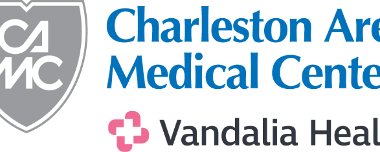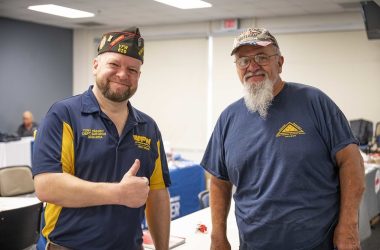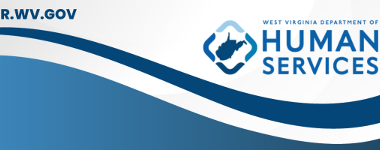151 child protective service worker positions available statewide
By Autumn Shelton, WV Press Association
CHARLESTON, W.Va. – Workforce shortages in West Virginia’s child welfare system continue to impact children and families throughout the state.
Jeffrey Pack, commissioner of the DHHR’s Bureau for Social Services, told members of the legislative Joint Committee on Children and Families during their Tuesday interim meeting that current child welfare workforce shortages are “hovering” around 30%.
“We have talked quite a bit about this, ad nauseum, but it simply bears repeating here that we do face a high level of workforce shortages in child welfare positions,” Pack said, noting that in 2018 it took roughly $28,000 to recruit and train a new employee.
“That number could have only increased in those four years since then,” he added. “So, there is a drain on resources for us recruiting folks and not being able to retain them.”
As of July 31, there were 151 child protective service worker positions available statewide, according to data provided by Pack. He explained that the Bureau for Social Services (BSS) has implemented pay increases, mentoring, staff surveys and more to retain and recruit employees.
These shortages “have consistently been the root cause of underperformance relative to CSFR (Child and Family Services Reviews) outcomes,” he said.
Additionally, during his presentation, Pack provided data on state child abuse and neglect referrals and foster care placements.
According to Pack, the “first point of contact” for child abuse and neglect referrels comes from the centralized intake hotline.
In 2021, centralized intake received 36,697 referrals, Pack said. “Of those, 23,280 (63%) were screened-in for assessment and investigated.
The next step, once a screened-in child abuse and neglect referrel has been made, is to “conduct an assessment on the family to determine if the abuse or neglect has occured,” Pack continued.
Data from 2021 shows that 10,418 assessments were considered to be “false positive,” 6,787 were “true negative,” 5,239 were “true positive,” and 147 were “false negative,” Pack stated. The data continues to show that 138 children out of every 1,000 living in the state will be screened-in for referral at some point.
“That is significantly higher than the national average which is right at 40,” Pack said.
He continued that the “focus of child welfare services shifted to preventing removal of children from their home and preventing abuse and neglect from occurring” following passage of the Family First Prevention Services Act of 2018. “As a result, the BSS has been working to refocus its providers, services and staff of prevention and in-home services when it can be done safely.”
When it cannot be done safely, children will be placed in “state’s custody,” meaning foster care.
As of July 1, there were 6,619 children in foster care in West Virginia, Pack said, with children ages 13-17 representing the highest rates at 29.54%.
“West Virginia has the highest entry rate of children in foster care of any state in the country,” Pack said. “We are significantly higher.”
The good news, Pack continued, is that West Virginia has high rates of “kinship care.” This means that children are placed with someone they already know.
“It could be grandparents, aunt, uncle, brothers, sisters, it could also be a teacher or someone from church – someone who the child is familiar with and already has a relationship with,” Pack said, adding that “West Virginia has the highest rate of kinship care of any state.”
In August 2022, more than half of the children in West Virginia foster care placements were in “kinship care.” The remaining 3,030 children were in other placements such as therapeutic foster care, group residential care facilities and emergency shelters, Pack noted.
Some children are placed out-of-state, although the BSS has been working “very, very diligently to reduce the number of kids that are placed in facilities out-of-state,” Pack said.
As of Aug. 31, there were 355 children placed in residential treatment facilities out-of-state. This number has been reduced from 458 children who were in out-of-state placements in 2019, he explained.
“Oftentimes we don’t have the mental health infrastructure to provide the appropriate treatment for these kids in West Virginia, and are forced to seek out facilities that are outside of the state,” Pack said, noting that in some cases children do find out-of-state placement with family members.
“For every child that comes into foster care, permanency is the goal,” Pack added. “Permanency may mean reunification with parents. Permanency may mean guardianship. Permanency may mean adoption, so permanency is the goal–whatever that is.”
In West Virginia, 52% of children who enter foster care will achieve permanency within 12 months, Pack said. This is above the national percentage of about 40%.
“We are in the top 10,” Pack said of permanency rates.
However, “the longer a child is in placement without achieving permanency, the more difficult it is to achieve permanency,” he added. “So, if a child has been in state’s custody for two years, which is a long time, the chances of them finding a forever family is diminished considerably.”
In response to questioning from Del. Danielle Walker, D-Monongalia, on the number of children in state custody currently sleeping in hotels, Park estimated that about 2-4 are currently in that situation, adding that this is typically due to not being able to find immediate placement in emergency shelters or other locations.
Del. Walker also asked if the opening of the new crisis center in Elkins will “fit into the design of the residential care commitment in the DOJ agreement to reduce residential care.”
Pack responded that it will not be a treatment facility, but “a safe place for us to take care of kids in emergent situations so that we have the opportunity to make a proper evaluation of the children and figure out what is necessary for their best interests and care.”
Also, answering a question posed by Sen. Rollan Roberts, R-Raleigh, Pack stated that services are available for families who are taking care of adult children with disabilities, like an Autism Spectrum Disorder.
During the meeting, Cindy Largent Hill, director of the Division of Children and Juvenile Services, spoke before committee members about the shortage of registered attorneys who may be appointed guardians ad litem in child abuse and neglect cases.
According to Hill, there are 262 registered attorneys who have completed necessary training requirements to become a guardian ad litem.
In 2021 alone there were 5,876 new abuse and neglect petitions filed in the state, Hill said.
“You can imagine it’s a significant number of children who are in care,” she continued. “Those increased petitions means increased court hearings and increased MDTs (multidisciplinary teams).
She explained that judges spend at least one day a week hearing abuse and neglect cases. Additionally, there are “geographic challenges” present in multiple counties.
“Children are placed all around our state and sadly, due to the infrastructure, sibling groups are often separated,” she said. “Those present a lot of challenges to just a day in the workweek for a guardian ad litem to complete the responsibilities.”
“As you know, and as you have heard, we do have an infrastructure challenge in our abuse and neglect system – that’s basically with every stakeholder in the system” she continued. “We are grossly understaffed with every single person who is working with these children.”
She said that her division is currently working to recruit attorneys to become guardians ad litem.
“Whatever we get, we are thankful to have,” she concluded.






